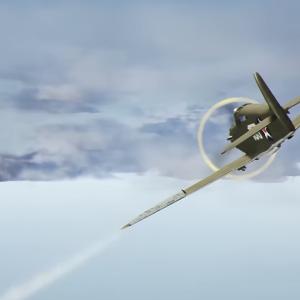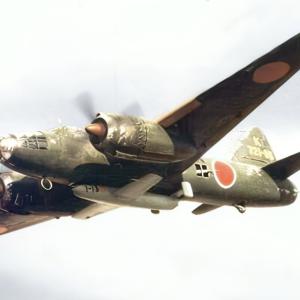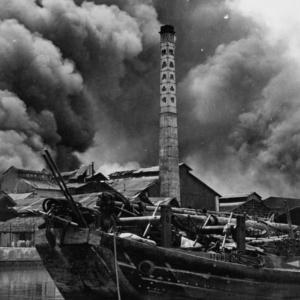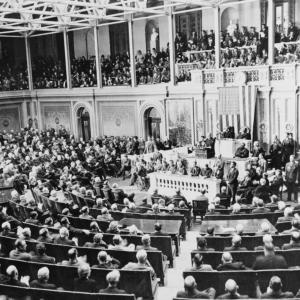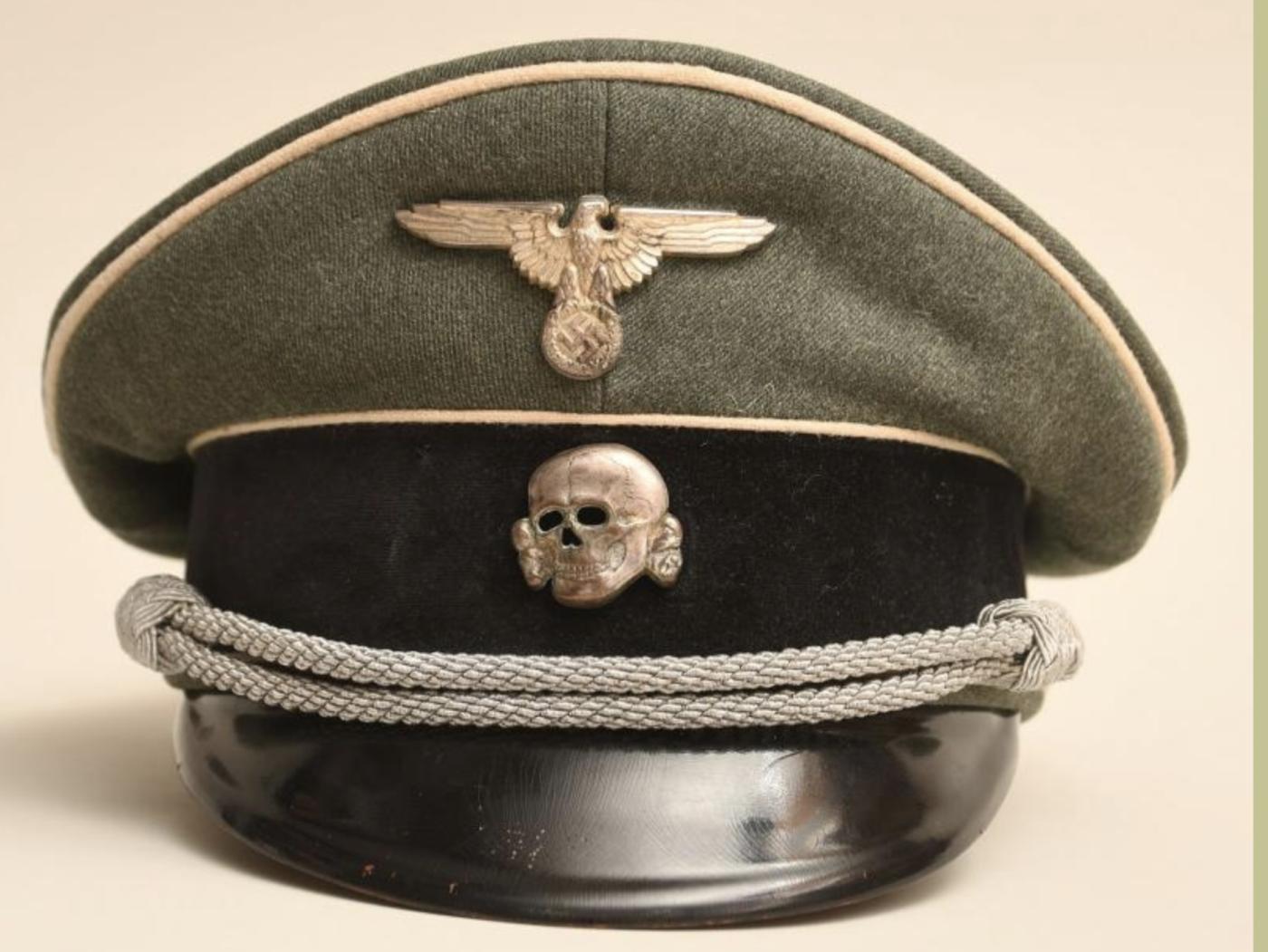
SS Schirmmutze visor hat
The Waffen-SS officer’s peaked cap, known as the Schirmmütze, was one of the most recognisable pieces of uniform worn by SS personnel during the Second World War. It combined traditional German military headgear design with the distinctive insignia and stylistic flourishes that marked SS identity. Constructed from high-quality field-grey tricot wool, the cap featured a saddle-shaped crown that was piped in white for officers, a black velvet cap band, and a semi-rigid internal frame to maintain its proud, upright form. The visor itself was made from black lacquered Vulkanfiber with a cross-hatched underside, durable and lightweight, which gave the cap both its practical and ceremonial presence.
Two prominent emblems dominated the front. Above the band sat the silvered SS national eagle clutching a swastika, while at the centre of the band was the Totenkopf skull, an emblem steeped in the SS’s symbolic identity. These badges were typically made from die-struck brass, tombac, or zinc and finished with a silver coating, though some officers chose bullion-embroidered cloth versions for a more refined look. The chinstrap for officers was a pair of aluminium cords fastened with pebbled buttons, another feature distinguishing the cap from those of enlisted men, who wore black leather straps instead.
The Schirmmütze’s design drew upon earlier Wehrmacht peaked caps, but its specific insignia and stylistic emphasis were shaped in part by Karl Diebitsch, an SS officer and artist who helped define much of the organisation’s visual style. The manufacturing was carried out by several military outfitters, among them Carl Halfar and other established German cap makers, who produced the caps to strict specifications.
Many officers modified their caps by removing the internal stiffener, creating the softer “crusher” look favoured by Panzer troops and front-line commanders. These variations, while unofficial, became a familiar sight in wartime photographs and reflected a blend of regulation and personal style.
Exact production numbers were never recorded, but thousands were made between the late 1930s and 1945. Surviving original examples today are scarce, especially those retaining both their original insignia and undamaged interiors, and they are highly sought after by collectors and military historians. The Schirmmütze remains one of the most iconic pieces of SS uniform, a potent mix of tradition, symbolism.

